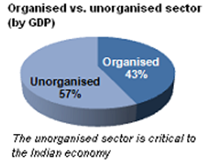| Welcome to the March issue of ValueNotes Connect.
While most emerging markets witnessed a decline this year, India has done exactly the opposite. Along with Thailand, Indonesia and the Philippines, India has attracted a huge share of FII money and the stock markets are soaring. So what’s keeping the FIIs interested in India? – The elections; more specifically, strong expectations of a dramatic political change in the country. The election euphoria combined with a strengthening rupee have given us the highest ever ownership by Foreign Institutional Investors in Indian stocks. The Sensex has been one of the best performing indices this year, and as some analysts put it, “the party will continue in 2014”.
There’s a large amount of interest in India right now, but at the end of the day, no matter who comes in, the country will continue to be a complex market to do business in. In fact, India is still ranked quite low (134 out of 189 economies) in the Ease of doing business index.
This month we talk about how businesses can address the complexities in the Indian market –
– Varsha Chitale blogs about the challenges investors face when doing business in India, and how primary research can help
– Rohan Shevate blogs about the need to include India’s large unorganized sector in research studies, and the difficulties faced when doing so
– With the country’s Tier I & II cities coming into reckoning as the growth drivers of the future, Rohan Jain tells us how to leverage opportunities in this demographic
We hope you enjoy reading our newsletter, and as always, we look forward to your comments.
Best regards. |
|
| Getting reliable inputs from primary research in India |
| by Varsha Chitale |
|
 |
Emerging markets like India are the preferred destination for a variety of organizations. But doing business in India is fraught with challenges, particularly for investors who are not familiar with the country. In the absence of published research and reliable statistics, one has to rely on primary research. But can you really base your investment decision on what a bunch of people are telling you? The answer is yes, if you design your primary research well. |
| more>> |
|
|
| Research in unorganized and fragmented markets |
by Rohan Shevate
|
|
 |
In India (as in many developing economies), the unorganized or small-scale sector is considerably larger than the organized sector in terms of employment and share of GDP. Any research study which does not include the unorganized sector will depict an inaccurate picture. However, doing research in unorganized sectors comes with its own unique set of challenges… |
| more>> |
|
|
| Leveraging opportunities in Tier II & III cities in India |
| by Rohan Jain |
|
 |
As Tier I markets have reached saturation, companies across sectors are now looking at these markets for future growth. One cannot treat the Tier II & Tier III markets simply as an extension of their Tier I counterparts. They have inherently different characteristics, are vastly different from Tier I cities, and new strategies and formulas will need to be devised if businesses expect growth from them. |
| more>> |
|
|
|
|
|
|
|
|












